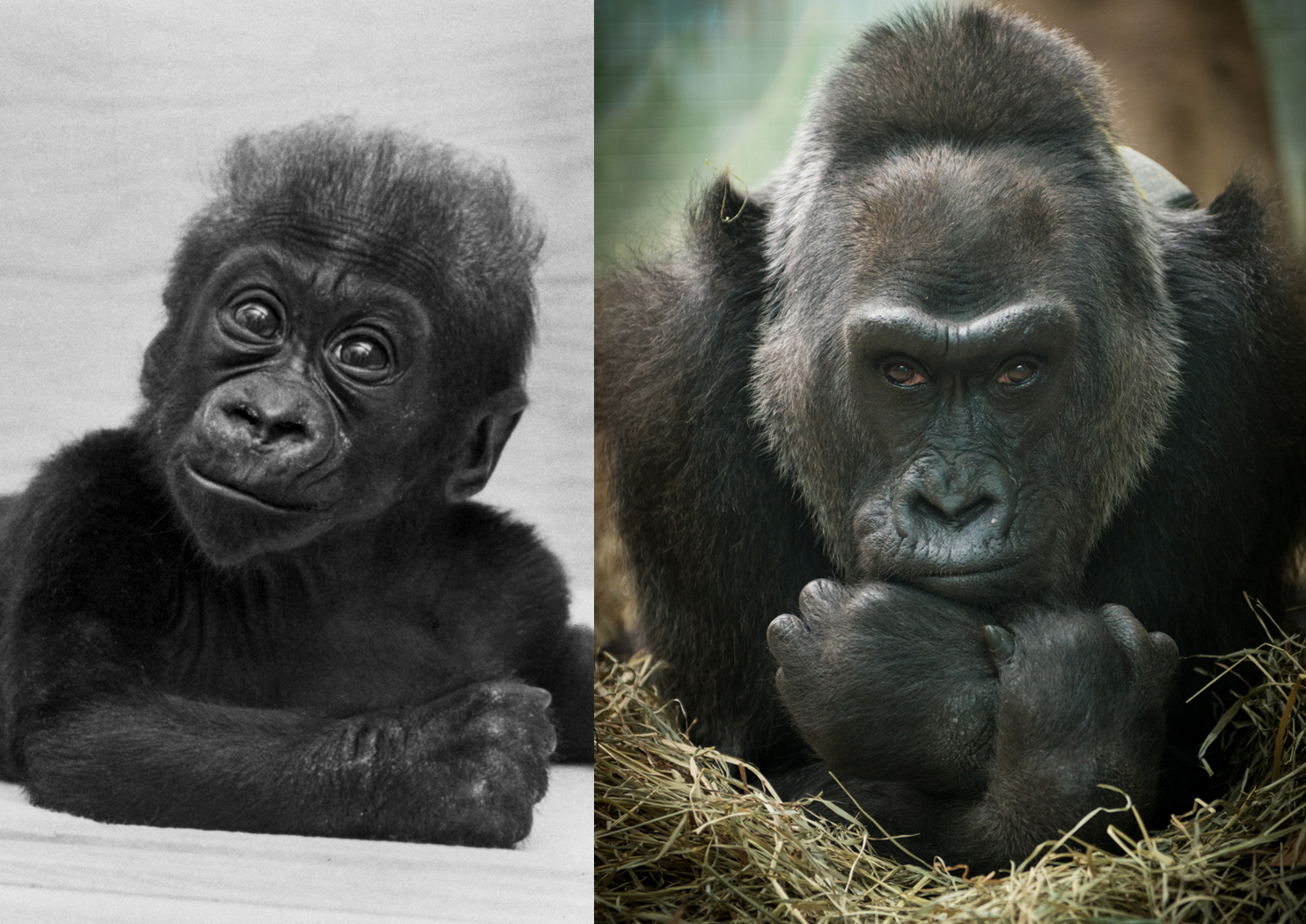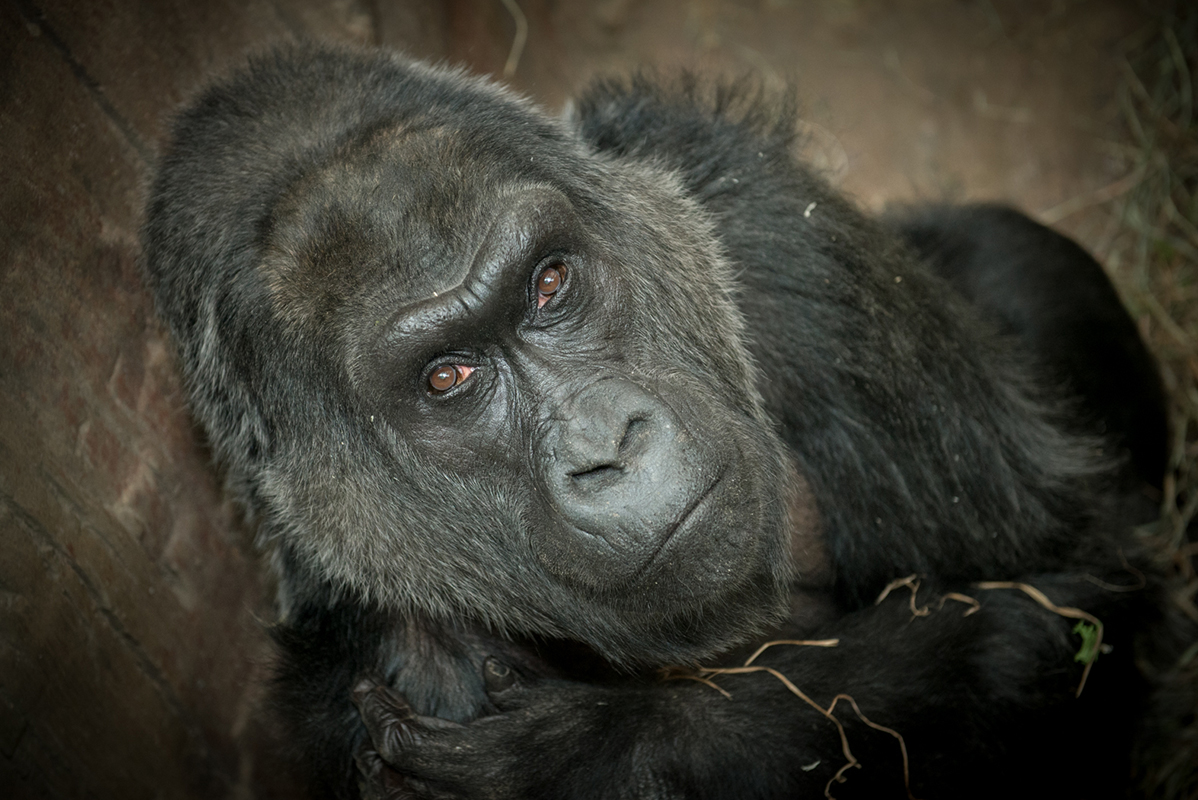Happy Birthday, Colo! World's Oldest Gorilla Celebrates 60th

The first gorilla born in human care turned 60 today (Dec. 22) at her home in the Columbus Zoo and Aquarium in Ohio.
Colo, whose name is a combination of "Columbus" and "Ohio," is a western lowland gorilla, and is the oldest gorilla in the world. Born in 1956, she first broke this record in 2012 when she turned 56, already decades beyond a gorilla's typical life expectancy, which is about 30 to 40 years old.
Now entering her seventh decade, Colo's birth and subsequent reproductive success represent years of progress in the care and breeding of captive gorillas, the Columbus Zoo said in a statement. But she also draws attention to the plight of gorillas in the wild, which are increasingly under threat from poachers and from habitat destruction. [Colo, World's Oldest Gorilla, Turns 60 (Photos)]
When Colo was born at the Columbus Zoo, scientists knew little about gorilla pregnancy, and she arrived several weeks sooner than expected, according to a 2009 video about her life by Columbus Zoo Media. In the video, a narrator describes a zookeeper discovering a newborn Colo, still in her amniotic sac, on the gorilla enclosure floor in the early morning hours of Dec. 22, 1956, abandoned by her mother.
'Round-the-clock attention
Zoo staff provided 24-hour care for the infant, and she grew and thrived under their attention. In 1958, she was introduced to a male gorilla, Bongo, who became her companion and mate for the next 25 years, and with whom she produced three young gorillas, two females and a male. Over the years, Colo's offspring brought her 16 grandchildren, 12 great-grandchildren and three great-great-grandchildren. "JJ," the most recent gorilla arrival at the zoo, was born Sept. 28 and is Colo's great-grandson.
Colo currently lives in close proximity to other gorillas, but her keepers have made special arrangements to accommodate her dietary and social needs as she ages. She has her own enclosure, as she appeared to be more comfortable spending her days apart from the larger groups, said Audra Meinelt, the assistant curator of the Congo Expedition at the Columbus Zoo.
In recent years, Colo has also been particularly challenged by arthritis, just as aging humans can be, Meinelt told Live Science. Dietary supplements help to counteract stiffness, while zoo staff have modified structures in Colo's living space to make it easier for her to get around; they also created enrichment devices to encourage Colo to use her digits.
Get the world’s most fascinating discoveries delivered straight to your inbox.
"Her arthritis is very specific to her hands and feet, so we came up with ways to get her to use her fingers more often," Meinelt said. "We also changed the way that we present her diet, so that also causes her to exercise her fingers."
Picky eater
Colo's diet has changed as she's gotten older, partly because she's become choosier about what she eats, Dana Hatcher, manager of animal nutrition at the Columbus Zoo, told Live Science.
"She doesn't like zucchini, or green beans, or grapes, or honeydew, or cantaloupe, or oranges or strawberries," Hatcher said. But Colo still gets plenty of variety in her diet, along with probiotics, brewer's yeast for additional B vitamins and lots of iceberg lettuce, which helps keep her hydrated.
As Colo has grown and changed over decades, so too has the Columbus Zoo. The center established a gorilla surrogacy program to ensure that newborn gorillas are raised and socialized by other females if their own mothers are unable to care for them. As a member of the Association of Zoos and Aquariums’ Species Survival Plan, developed in 1981, the zoo collaborates with other zoos to maintain healthy populations of captive animals and to ensure genetic diversity.
But preserving gorillas in the wild is also part of the Columbus Zoo's mission. Colo's longevity has kept her in the public eye for a long time; for many visitors, she is one of a handful of gorillas that they will ever see firsthand. As such, she provides an important connection to wild populations that are in dire need of conservation, Meinelt said.
"She's an excellent ambassador for her species," Meinelt told Live Science. "People know who she is. They look forward to celebrating her birthday each year, and that gives us the chance to educate them about what gorillas are facing in the wild and how critical their situation really is."
Original article on Live Science.

Mindy Weisberger is a science journalist and author of "Rise of the Zombie Bugs: The Surprising Science of Parasitic Mind-Control" (Hopkins Press). She formerly edited for Scholastic and was a channel editor and senior writer for Live Science. She has reported on general science, covering climate change, paleontology, biology and space. Mindy studied film at Columbia University; prior to LS, she produced, wrote and directed media for the American Museum of Natural History in NYC. Her videos about dinosaurs, astrophysics, biodiversity and evolution appear in museums and science centers worldwide, earning awards such as the CINE Golden Eagle and the Communicator Award of Excellence. Her writing has also appeared in Scientific American, The Washington Post, How It Works Magazine and CNN.
 Live Science Plus
Live Science Plus







